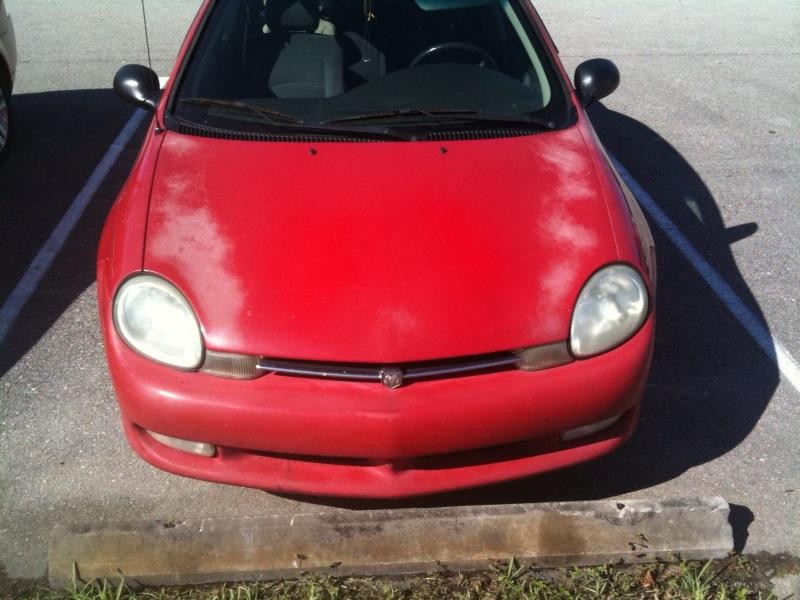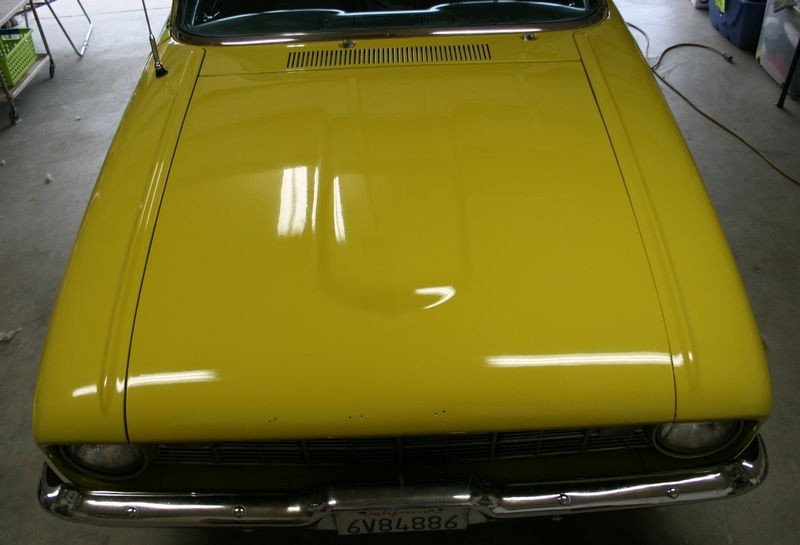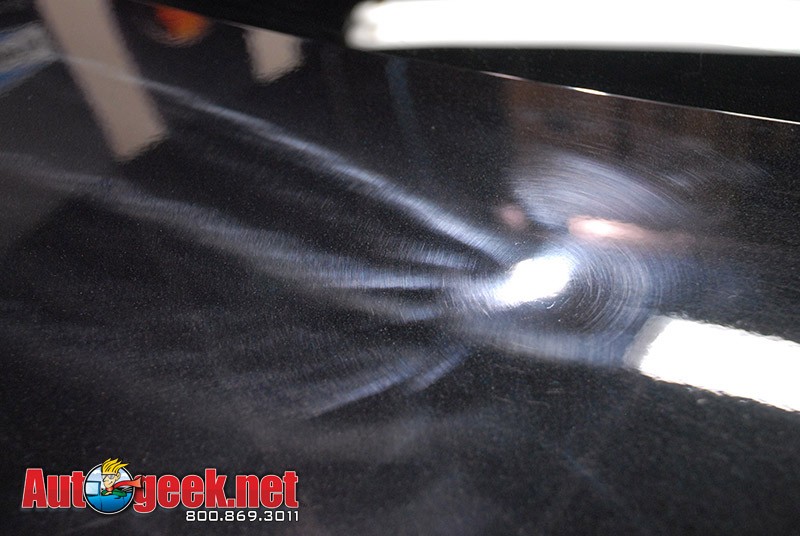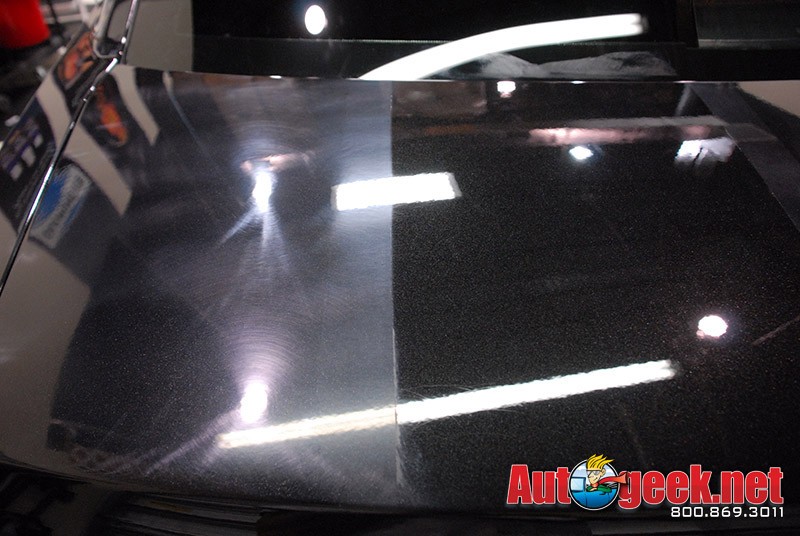Ok so I have a client who just bought a 1967 fastback. its all original including the paint. back then ford painted their cars with enamel paint and to be honest i have never buffed enamel.
You're in for a treat, you're going to be working on real paint, nothing like today's modern clear coats which are more akin to plastic than old school lacquers and enamels.
See my article, here it's very indepth...
The practical differences between single stage paints and a clear coat paints
I've worked on hundreds of cars with single stage paints as well as conducted a number of extreme makeovers where the project car had single stage paint and below I'll outline some of the practical differences between single stage paints and clear coat paints. One of the reasons I chose single stage paint for the extreme makeovers was just to give younger detailers a chance to work on single stage paint, usually on very cool cars, this is becoming a more rare opportunity as time passes.
Clearcoat paints were introduced to production cars in the U.S.A. starting in the early 1980's and since that time the technology has continually improved to create automotive paint systems that will last a long time as well as provide a beautiful finish with great gloss, clarity and shine.
The oldest factory clear coat finish I've ever worked on was an all original 1980 Corvette and after that it was an all original 1982 Corvette. Here's a picture of the 1982 Corvette, I'm still searching my hard drive for a picture of the 1980 Corvette.
All original 1982 Corvette
Since clear coat finishes, or what's called Basecoat/Clearcoat Paint Systems were introduced and become mainstream, we now have entire generations of people that have only owned cars with what's called a basecoat/clearcoat paint system; they have never owned, nor worked on a car that has a single stage paint system.
From time to time a new member will join our forum and ask for help removing
oxidation from their car's finish not knowing that the problem with their car's paint, (basecoat/clearcoat), is not oxidation, but is in fact
clearcoat failure.
Clear coat paints, when exposed to too much sun over time and without out proper care will deteriorate throughout the entire
matrix or
thickness of the clear layer of paint. You can't fix it by abrading the surface because the problem isn't just on the surface,
it's throughout the entire layer of paint. This is called clearcoat failure and the only honest fix is to repaint the affected panels or the entire car.
Clear Coat Failure
The primary problem most people experience with the clearcoat finish on their car is
swirls. Swirls are actually scratches in the paint and besides being ugly and unsightly, they block your view of the color coat under the clear coat.
Swirls can be removed because they are
topical, that is like oxidation the swirls are in the upper surface of the layer of clear paint and all you have to do is use a compound or a paint cleaner and remove a little paint from off the surface which will act to level or flatten out the surface again. See the below thread for more information.
What it means to remove swirls, scratches and water spots out of automotive clear coats
Single stage paints like the type of paint that came on a 1965 Mustang will
oxidize and the problem can be fixed because like swirls, the problem is topical and isolated to just the upper surface of the paint. The way you fix oxidation is to abrade or remove just a little bit of paint off the surface to expose a fresh layer of paint or what we call a
fresh base.
Top: 1965 Mustang with single stage finish. Bottom: 2009 Mustang with a basecoat/clearcoat finish.
Classic cars with oxidized single stage paints are easy to fix, (in my opinion), as well as fun to work on, (again, just my opinion).
The thing to understand is that there's a huge difference between these two types of paint systems; the good news is you can usually fix
true oxidation but the bad news is in most cases once a clearcoat finish deteriorates to what we call clearcoat failure there's really nothing you can do to permanently fix the problem and restore a nice looking finish that will hold up over time. Usually you have to repaint the affected sections or repaint the entire car, or learn to live with the problem.
Single stage paints will tend to be messier because whatever color of the paint is will be transferred to all your microfiber polishing cloths as well as to your buffing pads and this worries some people. There's nothing to be worried about. In most cases, washing your polishing cloths and buffing pads will remove most of the transferred pigment but not all of it however there's nothing to worry about as your polishing cloths and buffing pads can still be used for a future detailing session.,
Here's the practical difference
Single Stage Paints
The problem with single stage paints is oxidation as they oxidize very easily. Single stage paints still get swirls and scratches however in the real world the
noticeable problem is the dullness and fading by oxidation.
Oxidation Before
After removing oxidation
Clear Coat Paints
The problems with clear coat paints is swirls and scratches as they oxidize very slowly. Clear coat paints will oxidize but in the real world the
noticeable problem will be swirls and scratches. When you work on your own car or a customer's car your primary goal will be to remove swirls.
Swirls Before
After removing swirls
I also talk about this in the first part of my book...
Paperback
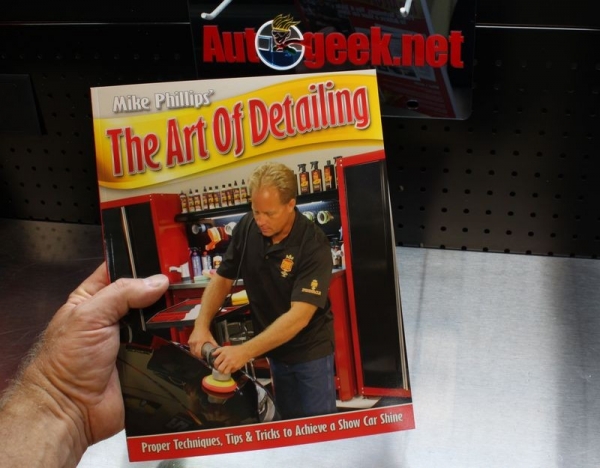
i know enamel is a two stage paint but does paint come onto the pad?
Basecoat/Clearcoat is referred to as two stage paints. Single stage paints are lacquers and enamels i.e. one-stage.
is it extremely hard? soft?
When it comes to hardness of softness as it relates to single stage paints the pigment, plus the type of resin determines the hardness or softness. See my article here,
The Lesson White Paint Teaches Us
what risks are involved in buffing enamel paints. i am using a rotary and i do have plenty of experience using a rotary. im just nervous about attempting a new type of paint on a very nice car.
thanks in advance
Use the least aggressive product to get the job done"
In your case, I would avoid compounds, especially caveman compounds and wool pads. If you're not very careful you'll leave
Tiger Stripes
The issue here is... you don't know how many people have "touched this car before you, by "touched" I mean machine buffed on or even hand-compounded. For all you know the paint is,
"Whisper Thin"
Anyone, using anything could remove too much paint and alter the look.
Stick with foam pads and start out using a fine cut or ultra fine cut polish and see if that gets you where you want to go, if not substitute a medium cut polish. Use a compound only as a last resort.
BE VERY CAREFUL ON ANY HIGH POINTS AND PANELS
This doesn't just mean raised body lines it means any panel, like the top horizontal surfaces where all the people before you could simply stand and run a buffer. It's easy to stand and run a buffer over horizontal surfaces and therefor more likely this has happened over time in the history of this car.
Nobody really likes sitting on their butt and buffing vertical panels, so it's likely this has happened less over time for the history of the car.
o and i forgot to ask if enamel paints are usually thin. i know the lacquer paints were done thin so they do not crack. does anyone have any info on enamel?
All factory paint is usually thin as compared to a custom paint job anywhere in time... just focus on the task at hand and use the least aggressive product to get the job done.
Take GREAT before pictures like shown here,
The power in the after shots is created in the before shots


